|
Bonnie Chow
The Top Spring Spots in the Hida Region

Want to visit Japan and avoid crowds? Mid-May to Jun is the tourism off-season. The weather is warmer but not too hot as daylight hours begin to lengthen, making it perfect for gondola rides to the heights of the Japanese Alps, taking hikes in the woods, enjoying light spelunking, or riding a bike on scenic mountain paths. Below we've laid out the top spots in northern Gifu (aka Hida) for you to check out.
Table of Contents
Weather and clothes
The weather from May until mid-June is wonderful, with intervals of sunshine and clouds. The start of the rainy season varies but usually starts in late June. During spring, the temperature of the Hida area varies between a low of 8ºC and a high of 28ºC. It can be a bit chilly during the day and night. The following places are at a higher elevation than most, with temperatures 3-4ºC cooler. Some snow may still be on the roads, so pack a winter jacket and waterproof hiking footwear.
Shinhotaka Ropeway
 Snowman on the observation deck
Snowman on the observation deck
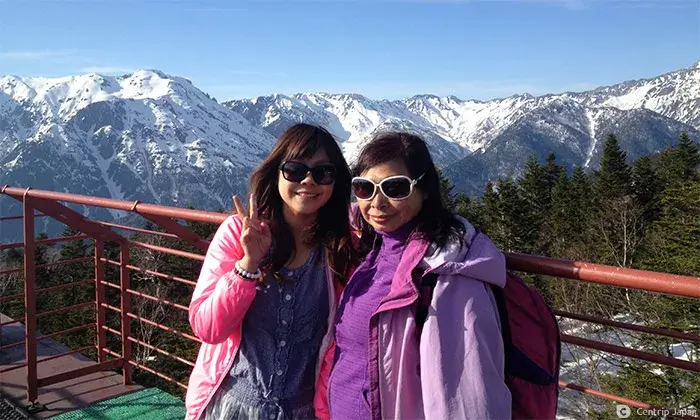 Breathtaking scenery of the snow-capped Japanese Alps
Breathtaking scenery of the snow-capped Japanese Alps
If you want to enjoy the Japanese Alps without any hassle, take the Shinhotaka Ropeway.
Spring is the perfect time to enjoy fresh greenery and the remaining snow of the Japanese Alps. The mountains around Takayama are over 2,000 meters above sea level, so the snow lingers into spring. Taking the Shinhotaka ropeway to the summit observatory is a popular day trip from Takayama. It only takes one hour and 45 minutes by bus from the Takayama bus station, and the one-way bus fare costs ¥2,200 per adult.
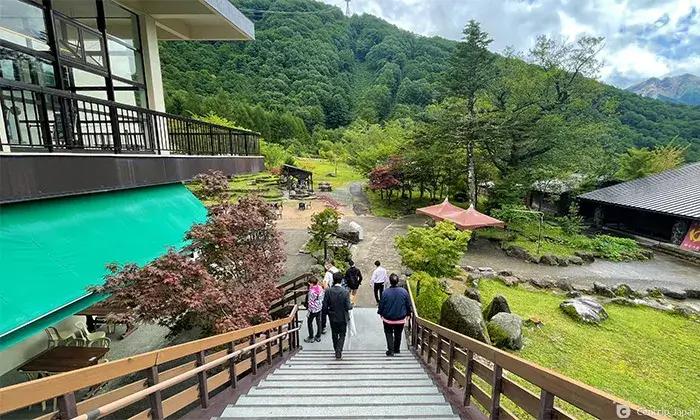 There are free hot spring foot baths and a resting area in Shirakabadaira Station.
There are free hot spring foot baths and a resting area in Shirakabadaira Station.
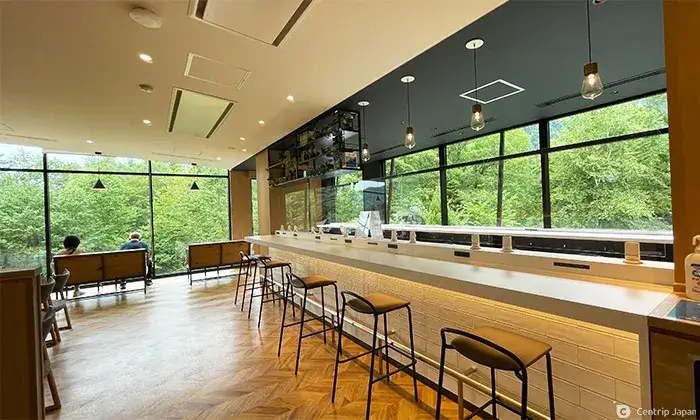 The newly renovated observation lounge at Shirakabadaira Station
The newly renovated observation lounge at Shirakabadaira Station
The first cable car brings you to Shirakabadaira Station in 4 minutes. You can take a break in the observation lounge and enjoy a coffee and some freshly baked bread while sitting on luxuriously handmade wooden Hida furniture and enjoying the mountain scenery.
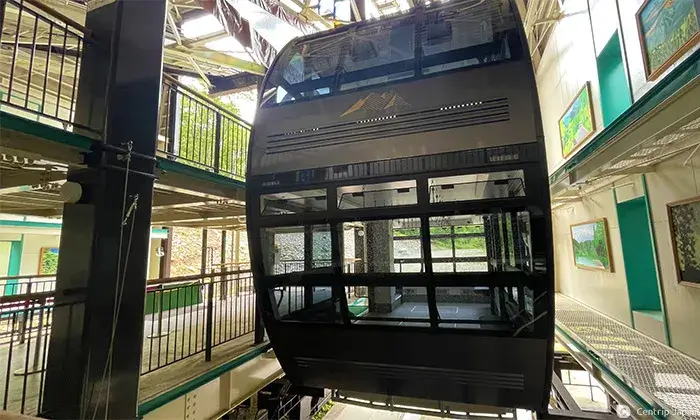 The new double-decker gondola from July 2020
The new double-decker gondola from July 2020
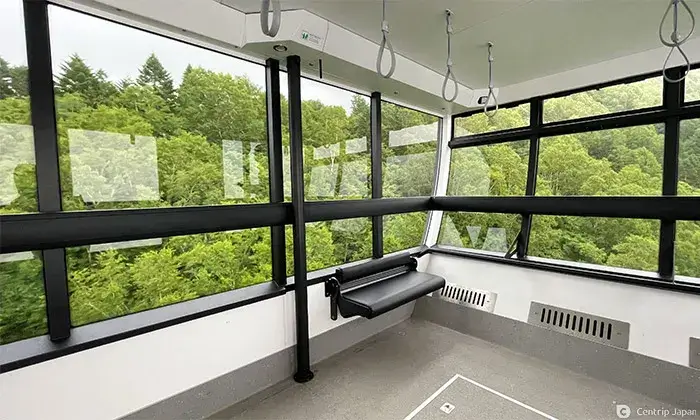 360-degree views from the new double-decker gondola
360-degree views from the new double-decker gondola
After refreshment, it is time to ride on the only double-decker gondola in Japan. It takes seven minutes to reach Nishihotakaguchi Station (Elev. 2,156m). In July 2020, they installed anti-fog windows and improved ventilation in the gondola. The observation deck will dazzle you with panoramic views of the snow-capped Japanese Alps and received two stars in Michelin Green Guide Japan. The round-trip ropeway fee for adults and children is ¥3,000 and ¥1,500. Nohi Bus offers package tours for the Shinhotaka Ropeway on specific dates. Please refer to the website for more details:
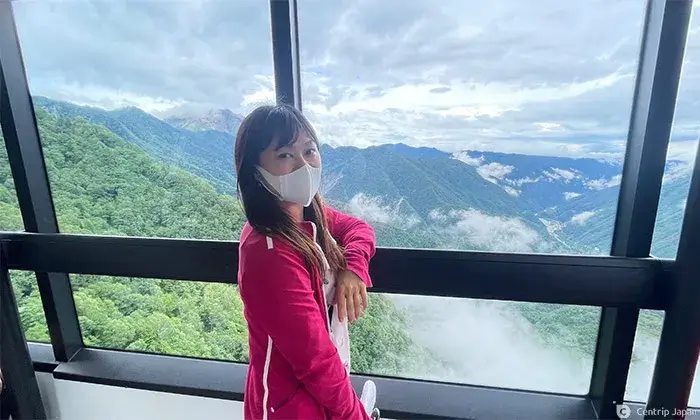 The view of the mountains among a sea of clouds.
The view of the mountains among a sea of clouds.
 The sea of clouds hot chocolate is tasty.
The sea of clouds hot chocolate is tasty.
Hida Great Limestone Cave
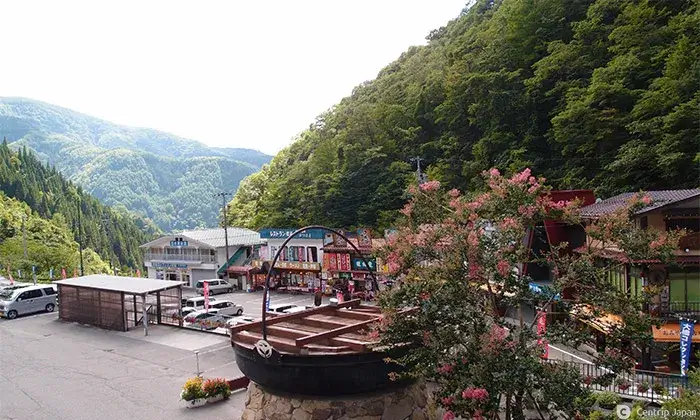 The limestone cave surrounded by nature.
The limestone cave surrounded by nature.
 The ocean water formed helictite lit up by blue light.
The ocean water formed helictite lit up by blue light.
Have you seen a limestone cave before? If not, visit the Hida Great Limestone Cave, the highest elevation among all in Japan and formed over 250 million years ago. The area was covered by ocean water, forming helictite, icicle-like stalactites, and the cleft in the rock. Going through the 800m-long tunnel illuminated with colorful lights creates an incredible natural wonderland. The cave sits around 12ºC year-round, so bring a jacket.
It takes 30 minutes by bus from Takayama to get here, and together with the entrance fee costs ¥2,000 (Bus ¥900, Cave ¥1,100).
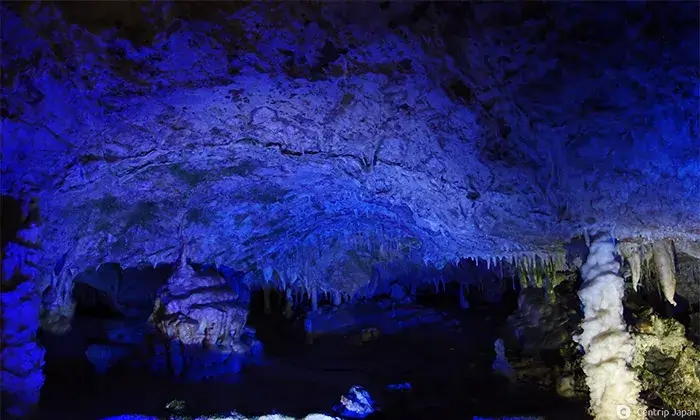 A magical atmosphere of light.
A magical atmosphere of light.
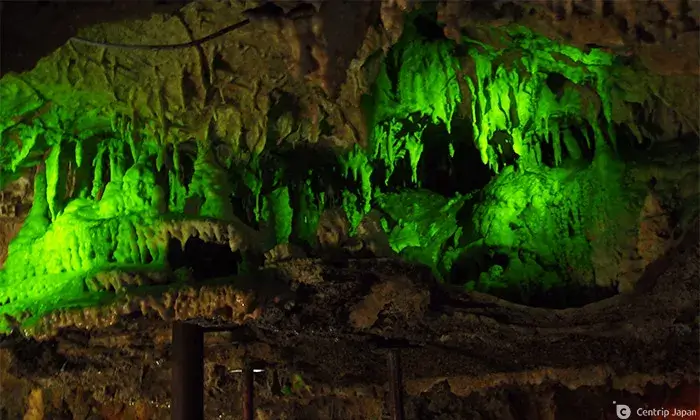 Green lights dancing in the cave.
Green lights dancing in the cave.
 Ocean water illuminated in blue.
Ocean water illuminated in blue.
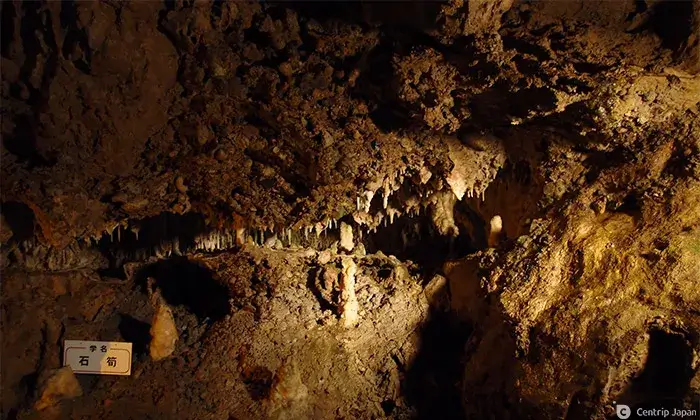 Numerous stalagmites decorate the cave.
Numerous stalagmites decorate the cave.
 Hirayu Waterfall
Hirayu Waterfall
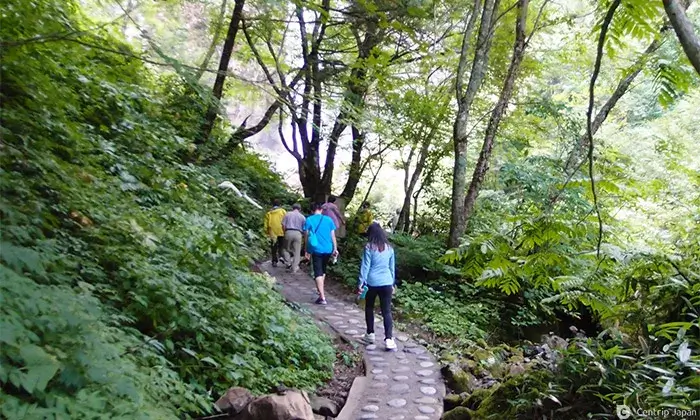 The path leading to Hirayu Waterfall.
The path leading to Hirayu Waterfall.
Stretch your legs a bit and hop on the next bus to Hirayu Waterfall for an easy hike and get refreshed by the splash of natural mountain water. It takes only 20 minutes.
Guided Hiking Tour in Goshikigahara Forest
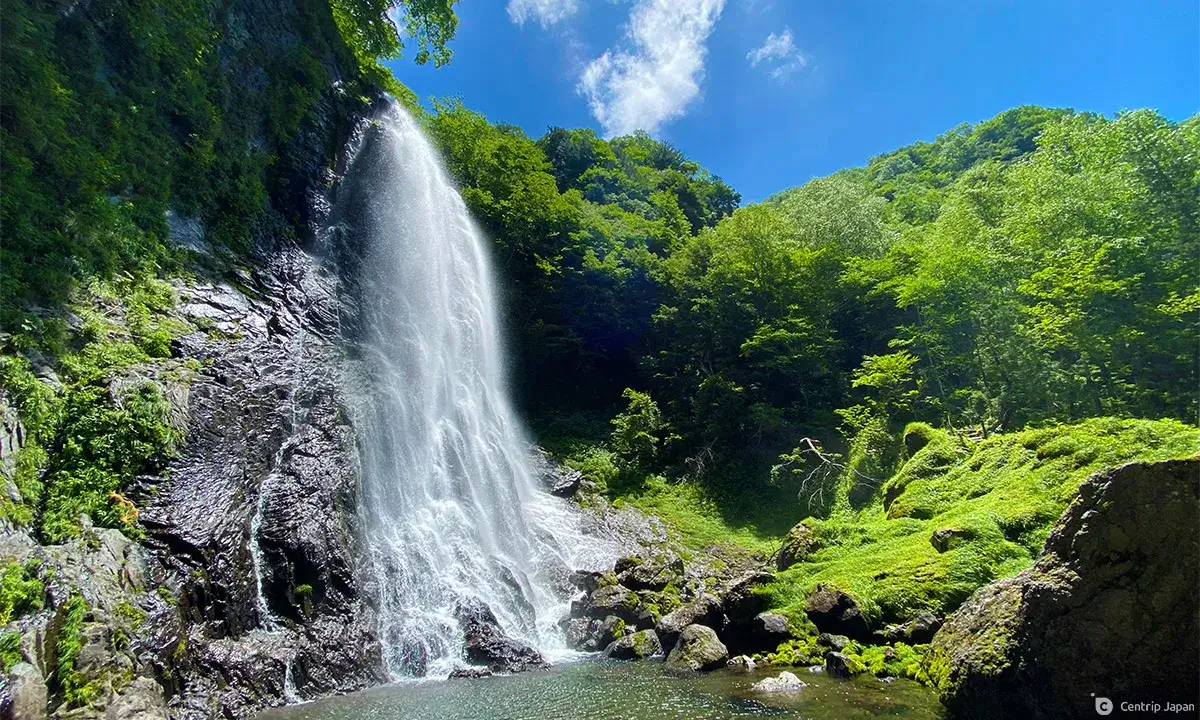 Enjoy the calming sounds of nature.
Enjoy the calming sounds of nature.
Goshikagahara Forest, located at the south end of Chubu-Sangaku National Park and 29 km from Takayama, is a vast 3,000-hectare forestry area of Mt. Norikura. It is truly a "treasure box" of nature with clear rivers, waterfalls, wetlands, lakes, ponds, plants, flowers, native trees, wild birds, and animals. Since there are no signs for directions in the Goshikigahara forest, it is compulsory to join the guided tour provided by the nature park, which is educational and fun.
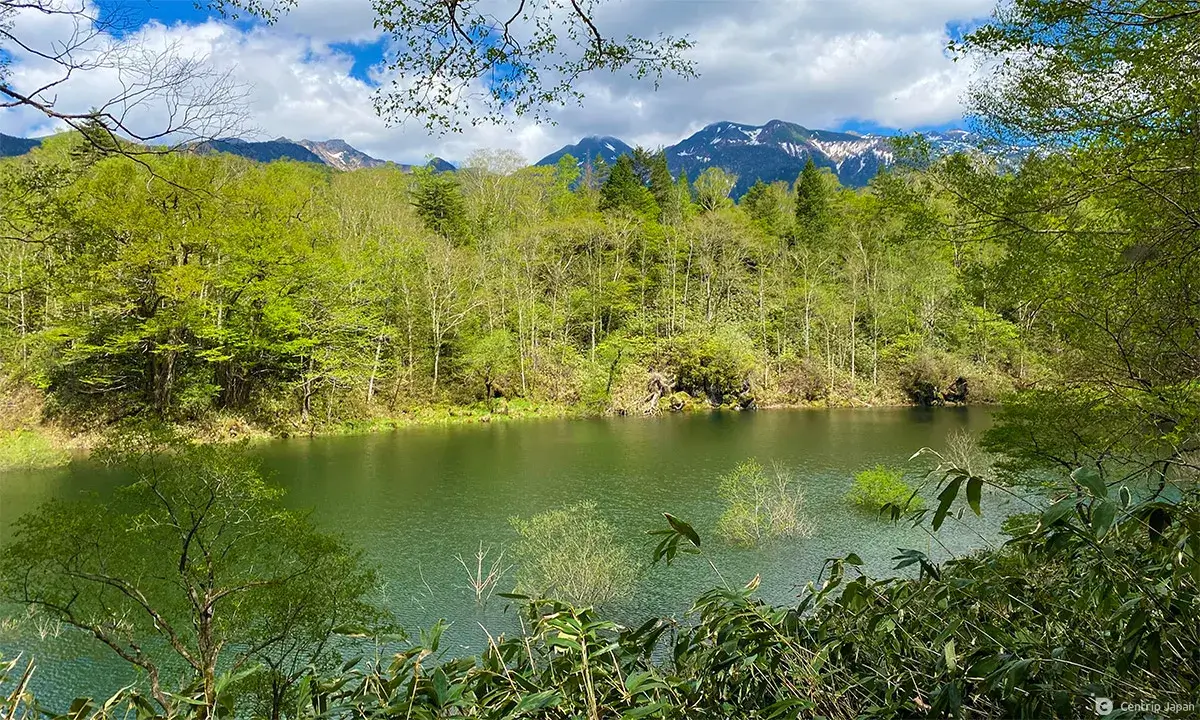 Snow remains on Mt. Norikura during spring
Snow remains on Mt. Norikura during spring
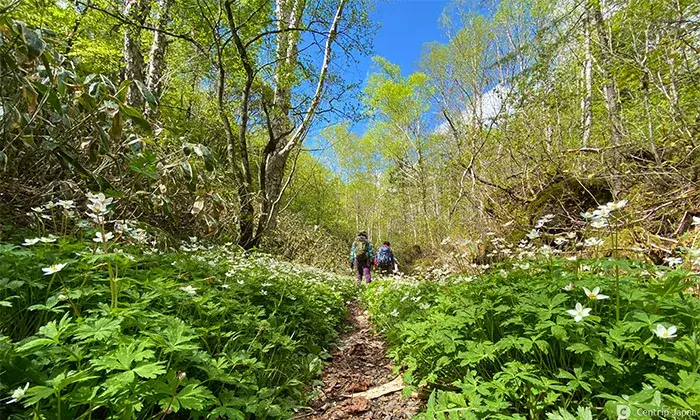 Seasonal plants and flowers are must-see in the tour.
Seasonal plants and flowers are must-see in the tour.
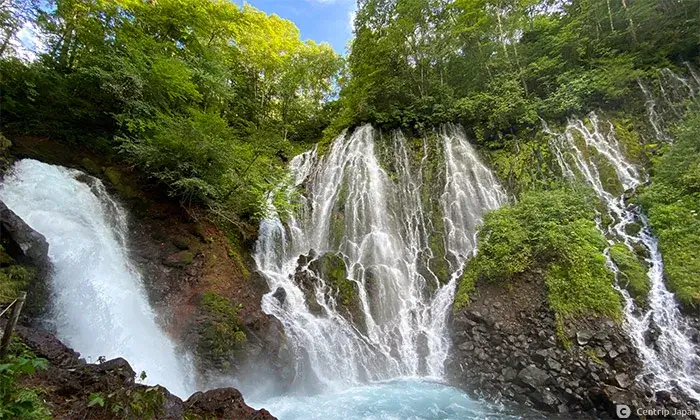 Nunobiki Falls in the park is the highlight of the tour.
Nunobiki Falls in the park is the highlight of the tour.
Accompanied by a nature guide, follow the tracks through the forest while learning about the plants and other natural features of the forest, such as moss, volcanic rocks, giant conifers, and more. Spring is the perfect season for new verdant growth, seasonal flowers, and miracle ponds. There are six tours, including half and full-day hikes. Choose one depending on your preference and ability. While hiking in the forest, enjoy the scent of the trees, the feel of the plants, and the taste of mountain water and wild berries.
Tours run from May 20 to October 31. From Takayama bus station, it takes about 40 minutes to reach the meeting point by bus or car. The bus costs ¥1,320 one-way.
Reservations are required. English tours are available on request if made 7 days prior.
For more details and inquiries, please visit the website.
Rail Mountain Bike, Gattan Go
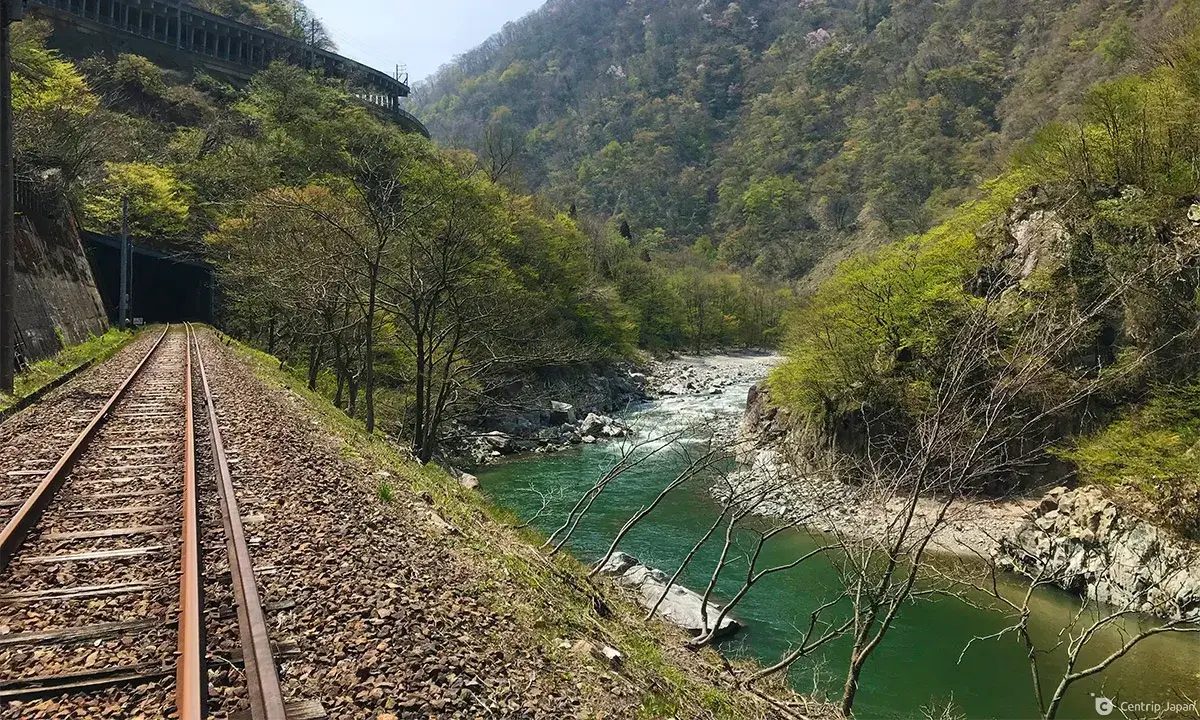 The natural scenery on the canyon course
The natural scenery on the canyon course
"Gattan" is the Japanese word describing the vibration sound made by trains passing by. A company in Hida Kamioka created an on-rail mountain bike course, Gattan Go, for tourists to enjoy the old railway tracks in the area.
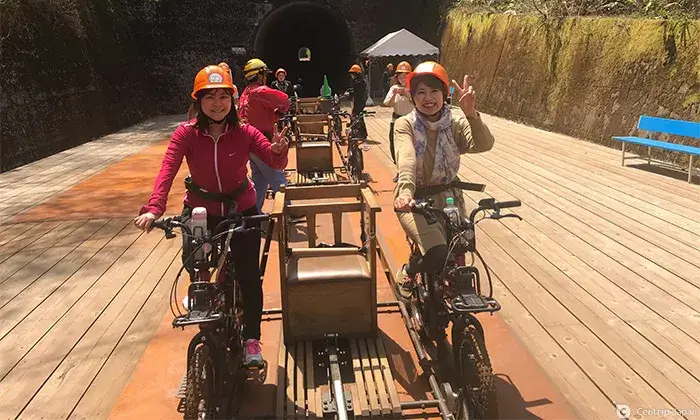 Riding on the rail is easy and fun
Riding on the rail is easy and fun
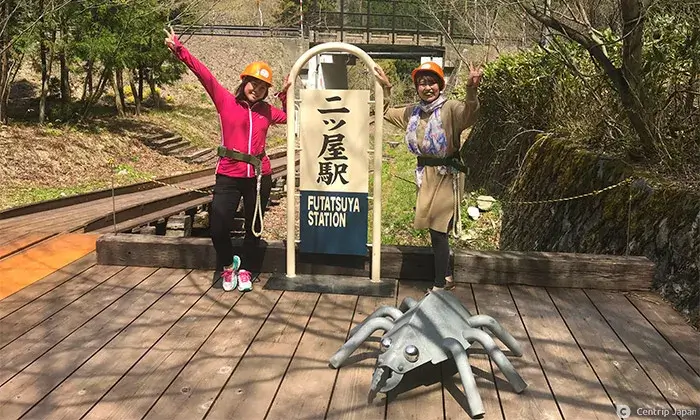 Futatsuya station, the endpoint of a one-way trip
Futatsuya station, the endpoint of a one-way trip
Two mountain bikes are fixed to the rail guide with a metal frame so participants just have to pedal to ride along the tracks safe and sound. Children over 145 cm can participate but kids smaller than 145 cm must sit in the front so they can enjoy the experience safely.
There are two courses: town and canyon courses. The town course is 2.9 km, and the canyon course is 3.3 km, one-way. A round-trip takes 40-60 minutes, including the briefing session and a break.
The track is gentle, and cycling with electric bicycles makes it very relaxing. The ride is engaging as you pass through the tunnels, over bridges, alongside rivers, and through the woods. Refresh yourself with a cool breeze while pedaling as the beautiful scenery of natural landscapes passes by.
The price for a two-person ride is ¥3,200 and up. Nohi bus provides combo tickets, including the cost of a bus, taxi ride, and bikes. Remember that reservations are necessary. From Takayama, it takes one hour to reach the gathering point, so getting a rental car might be best. Please note that Gattan Go is open from mid-April to mid-November. Please refer to the official website for details and reservations.
How to get to Takayama?
From Nagoya, take the JR Wide View Hida train. It takes about 2 hours and 40 minutes. Alternatively, take the bus to Takayama. A one-way train ticket is ¥5,610, whereas the one-way bus fee to Takayama is cheaper at ¥3,100.
Wrap-up
Spring is the perfect season to explore the nature of the Hida area. From the snow on Mt. Norikura to the winding bike trails of Gattan Go there are plenty of options for the entire family. We hope you can schedule some of the above spots for your next spring trip to Japan!
Click here to get the latest information on Central Japan.Centrip Japan - Nagoya and Chubu Information

